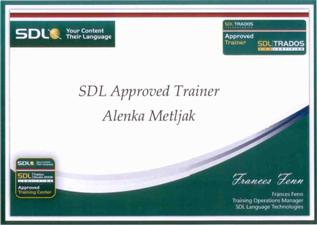

To make use of fragment recall and repair technology, you need to upgrade all your TMs. If you want to use machine translation for match repair, enable it here too: Go to File>Options>Language Pairs>All Language Pairs>Match Repair and activate “On”. * This feature was added in SR1 (released July 2017). Please vote for it and let’s see if it’s added in a service pack.* I’ve added this missing feature as an idea on the SDL community forum. What we’re missing is a shortcut to transfer a segment in an unrepaired state from the Translation Results window. Check out the last example in the screenshot above. The disadvantage? You can’t transfer unrepaired segments to the Editor window. Some repairs need no further editing, some need light editing and others aren’t any good at all, so I just transfer the useful repairs to my translation: Therefore, the percentage doesn’t reflect repair work or estimated post-editing, but simply the original fuzzy value. When a fuzzy match is repaired, the match percentage remains unchanged and a spanner symbol is added. Segments are repaired using a variety of resources, such as termbases, aligned translation models (see below), current TMs (whole segments and fragment recalls and even punctuation) and MT (machine translation providers). UpLIFT technology also comes into play in the new fuzzy match repair feature. You may want to move it to get more vertical space for fragment results. Unfortunately, there’s no option to exclude this leverage, so watch out for ingenious fuzzy rate grids from penny-pinching agencies.īy default, the Fragment Matches window is layered under the Translation Results and Concordance windows. The minimum word settings are displayed in an analysis, as is the fragment word count (broken down by whole TU and TU fragment). You may want to consider the impact of fragment matching on a file analysis. You’ll find that a very low number produces too much noise and higher numbers produce fewer results. With the above settings, fragment matches will be triggered whenever there are no results in the Translation Results window.Įxperiment with the minimum word numbers. Lastly, to implement fragment matching – which is off by default – and decide on the minimum number of words (and significant words) you want returned in the fragment match window, go to File>Options> Language Pairs>All Language Pairs>TM and Automated Translation>Search and enable TU fragment. Now, go to File>Options>AutoSuggest and activate “Fragment Matches”: If you don’t like the default khaki highlighting, this is also the place to choose your preferred colours: Go to File>Options>Editor>Fragment Matches Window and activate the “Display results…” box: But I’ll go through them one by one, in case you want to check. Most of these options are enabled by default.

There’s no size restriction either and you get immediate context, because source and target terms are highlighted. Fragment Recall offers suggestions in a similar way, on the fly through Autosuggest, but it leverages TMs immediately, without having to build a dictionary.

In practice, this new feature more or less replaces AutoSuggest dictionaries, a static resource that has been available since 2009. Not only whole TU matches are identified, but fragments too: Look at this example, where I’ve translated “capillary electrophoresis” for the first time in segment 341, and three segments later it’s offered as I type: (Click any screenshot to open it in a separate window) I love this because it’s almost infallible. The new upLIFT technology implemented in Studio 2017 means that a whole short segment contained in a longer one is offered through AutoSuggest. So here it is.įragment recall: Whole TU (translation unit) match upLIFT fragment recall and match repair is worthy of a post of its own. What’s in store for them? Fragment recall and repair, an Advanced Display Filter, adaptive machine translation, improved segment merging and more. Four months and nine builds later, Studio 2017 has been officially unveiled and is being rolled out to the thousands of users who pre-ordered the upgrade, have a support agreement in place or are buying Studio for the very first time.

I’ve been beta testing the latest version of SDL Trados Studio since the summer.


 0 kommentar(er)
0 kommentar(er)
